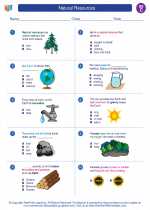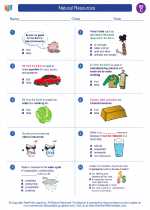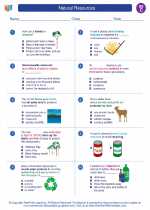Ecosystems
An ecosystem is a community of living organisms (plants, animals, and microorganisms) in conjunction with the nonliving components of their environment (such as air, water, and mineral soil), interacting as a system.
Components of an Ecosystem
1. Abiotic factors: Non-living components such as water, air, temperature, sunlight, and soil.
2. Biotic factors: Living components such as plants, animals, and microorganisms.
Types of Ecosystems
1. Terrestrial Ecosystems: Ecosystems found on land, such as forests, grasslands, deserts, and tundra.
2. Aquatic Ecosystems: Ecosystems found in water, such as oceans, rivers, lakes, and wetlands.
Food Chains and Food Webs
1. Food Chain: A linear sequence of organisms, each of which serves as a source of food for the next.
2. Food Web: A network of interconnected food chains showing the energy flow through part of an ecosystem.
Ecological Relationships
1. Predator-Prey: Predator organisms hunt and eat prey organisms for food.
2. Parasitism: A relationship between two organisms where one benefits at the expense of the other.
3. Mutualism: A relationship between two organisms where both benefit from each other.
Human Impact on Ecosystems
1. Deforestation: The clearing of forests for agriculture, urban development, or timber.
2. Pollution: The introduction of harmful substances into the environment.
3. Climate Change: The long-term change in Earth's climate, often due to human activities such as burning fossil fuels and deforestation.
Study Guide
- Define an ecosystem and list its components.
- Explain the difference between abiotic and biotic factors in an ecosystem.
- List and describe two types of ecosystems.
- Draw a food chain and a food web for a specific ecosystem.
- Explain the ecological relationships of predator-prey, parasitism, and mutualism.
- Discuss three ways in which humans impact ecosystems and the environment.
[Ecosystems] Related Worksheets and Study Guides:
.◂Social Studies Worksheets and Study Guides Third Grade. Natural Resources

 Worksheet/Answer key
Worksheet/Answer key
 Worksheet/Answer key
Worksheet/Answer key
 Worksheet/Answer key
Worksheet/Answer key
